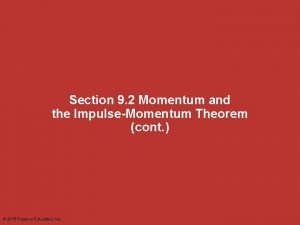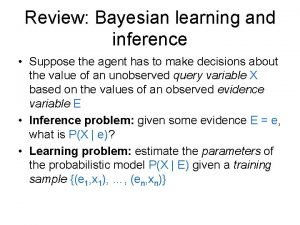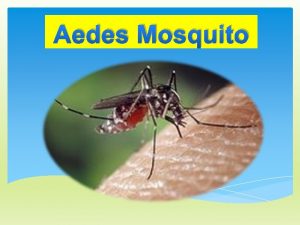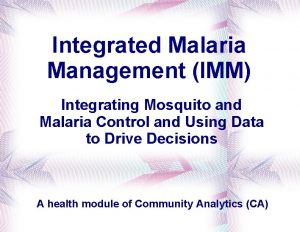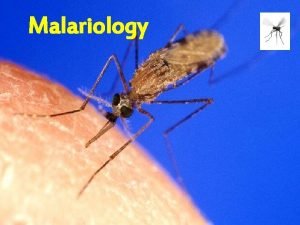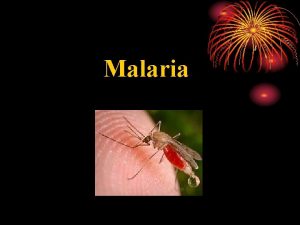Example Experiments Mosquito nets and malaria in India














- Slides: 14

Example Experiments Mosquito nets and malaria in India 1

Tarozzi et al. (2011) “Micro-loans, Insecticide-Treated Bednets and Malaria: Evidence from a randomized controlled trial in Orissa (India)” • Effect of subsidizing mosquito nets (treated with insecticide) on the incidence of malaria. • Experimental design at the village level. 2

“Treatment” • Villages assigned to 3 groups: – Free bednets – Subsidized bednets (micro loans) – Control group • Intervention in October/November 2007 • Later interviews about usage, and health tests (December 2008 -April 2009). 3

Analysis • 141 villages out of 900, sample of 1, 800 families (about 15 per village). • Effect of offering subsidized loans (X) on: – Acquisition and use of bednets (Y 1) – Malaria incidence (Y 2) • Differences estimator • (Dif in diffs) • With controls 4

Randomization test • Check that villages in the three groups are “the same” (W’s) • Income level, malaria incidence, previous use of bednets, etc. • Test for differences in means. 5

Differences estimator Yi = a + b 1 Freei + b 2 MFi + ui Difference-in-differences DYi = a + b 1 Freei + b 2 MFi + ui (with controls) 6

Results (“*” indicates significance at 5%) 7

Results (“*” indicates significance at 5%) 8

Results (“*” indicates significance at 5%) 9

Results (“*” indicates significance at 5%) 10

Results (“*” indicates significance at 5%) 11

Results (“*” indicates significance at 5%) 12

Threats to internal validity • Failure to randomize? • Imperfect compliance? • Attrition? – 4%, similar in all 3 groups • Experimental effects? • Small sample? 13

Threats to external validity • Non-representative sample? – Random sample of 900 villages with presence of BISWA (? ). • Non-representative treatment? • General equilibrium effects? – Probably! • Treatment versus eligibility? – Think! 14
 1-1 practice nets and drawings for visualizing geometry
1-1 practice nets and drawings for visualizing geometry Petri nets properties analysis and applications
Petri nets properties analysis and applications 1-1 nets and drawings for visualizing geometry
1-1 nets and drawings for visualizing geometry Semantic nets and frames
Semantic nets and frames Nets and drawings for visualizing geometry
Nets and drawings for visualizing geometry Nets and drawings for visualizing geometry
Nets and drawings for visualizing geometry Petri y gabriel
Petri y gabriel If you don't like my story write your own things fall apart
If you don't like my story write your own things fall apart A mosquito and a truck have a head on collision
A mosquito and a truck have a head on collision Thick and thin malaria smear
Thick and thin malaria smear Thin and thick smear
Thin and thick smear Malaria and dengue
Malaria and dengue Malaria and dengue
Malaria and dengue Design of experiments quality management pmp
Design of experiments quality management pmp Bayes nets
Bayes nets








